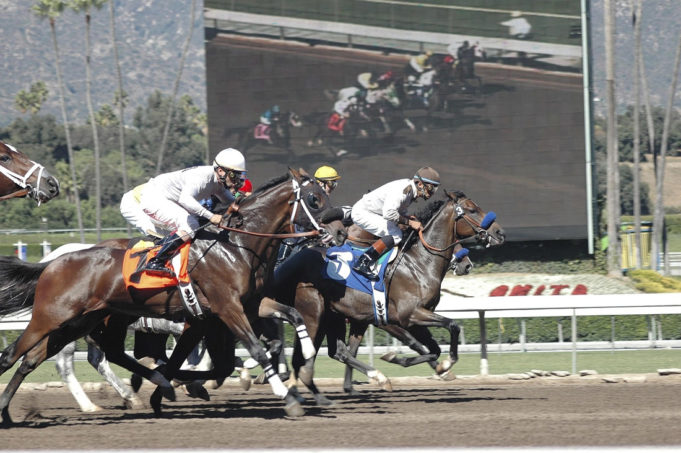Horse racing is one of the oldest and most popular competitive sports in the world. It combines athletic skill, training, and strategy in a fast-paced contest where every second counts. For fans and bettors alike, the sport offers excitement and uncertainty. Many factors can affect the result, which makes predicting the winner a challenge.
Horse racing predictions are built on data, not luck. Every race involves a mix of statistics, analysis, and experience. Before the horses reach the starting gate, experts have already studied thousands of details to estimate the most likely outcome. This article dives into that process.
Massive Data Collection
Before horse racing odds can be calculated, there’s data, a lot of it. Every element that might influence a horse’s performance is recorded, analyzed, and compared. The key data categories include:
Past Finishing Positions (Form): This shows how consistently a horse performs. A string of top-three finishes can indicate reliability, while erratic results might signal vulnerability under pressure.
Recent Speed Figures: These figures measure how fast a horse has run in recent races, adjusted for distance and conditions. They provide a standardized way to compare horses across different races.
Jockey and Trainer Statistics: Horse racing is a team effort. A top jockey can draw out that extra ounce of speed, while a skilled trainer can optimize conditioning, diet, and preparation. Historical win rates reveal how effective these partnerships have been.
Weight Carried: The more a horse carries, the harder it has to work.
Race Conditions: Everything from the track surface (turf, dirt, synthetic) to the weather and race distance matters. A horse that thrives on soft ground may struggle on a fast, dry track.
Modern analysts also pull in GPS data, sectional times, and even biometric insights like heart rate recovery and stride efficiency. The goal: create a comprehensive profile of each runner’s actual ability.
Assigning a Base Rating
Once the data is collected, each horse is given a base rating that represents its overall ability under neutral conditions. This rating serves as a numerical measure of how well a horse is expected to perform before any outside factors are considered. It is usually calculated using systems such as Timeform or other proprietary models that evaluate recent performances and weigh them against the level of competition and consistency.
For instance, a horse that performs regularly in top-tier races will typically receive a higher base rating than one that dominates lower-level contests. These ratings are often normalized against track averages or benchmark times to make meaningful comparisons across different races and venues.
Real-time Adjustments
Even the most detailed analysis can change in the final moments before a race. Analysts and bettors often update their predictions based on real-time information that becomes available shortly before the start.
Changes in track conditions, such as sudden rain that makes the surface heavier or faster, can affect how particular horses perform. Late scratches, when a horse is withdrawn from the race, can also shift the level of competition and change the overall outlook. In addition, pre-race behavior, such as a horse appearing anxious or unsettled in the paddock, can influence confidence in a prediction.
These updates are not about gathering new data over time. They involve adjusting existing information to reflect immediate circumstances. Real-time adjustments keep predictions relevant and accurate right up until the race begins.
Calculating Probability
Once all the horses’ ratings are finalized, analysts convert them into probabilities that estimate each horse’s chance of winning. The process begins by summing all ratings in the race to get a total performance pool.
Each horse’s probability is then calculated by dividing its individual rating by the total. This value is then converted into implied odds. For example, if Horse A’s adjusted rating represents 25% of the total, its true odds would be 4.0 (or 3/1). If the bookmaker offers 6.0 (or 5/1), it means the market undervalues the horse compared to the model’s estimate.
These comparisons help identify value opportunities, where the data suggests a better chance of winning than the betting market implies. Skilled bettors look for these situations and make decisions based on numerical advantage rather than instinct.
The Human Factor
Even the most advanced models cannot account for every variable. Human judgment still plays a vital role in horse racing predictions.
Experienced handicappers observe factors that data cannot measure, such as a horse’s body language in the paddock, its behavior during the warm-up, and any last-minute changes in weather or track conditions. A restless horse or sudden rainfall can influence how a race unfolds.
Despite the progress in data analysis, human insight remains essential. Racing continues to depend on both structured evaluation and the ability to notice details that numbers may overlook.
Conclusion
Horse racing predictions rely on data and careful analysis to understand how each race might unfold. Every step helps reduce uncertainty and make more informed judgments. While no method can obliterate chance, using a structured approach brings logic and clarity to a sport built on speed and competition.












